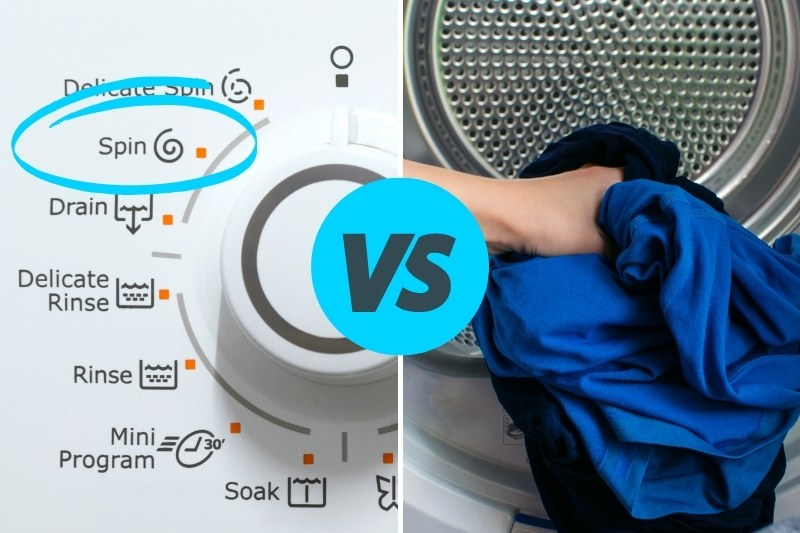Tumble dry, spin dry—they sound quite similar to some extent. They both have the word ‘dry’ in their name, have something to do with laundry, and are connected to wet clothes!
They are, however, quite different from each other! Yet, a lot of people are convinced that they’re one and the same. But don’t you go falling into this trap!
Instead, join me and discover what the main differences are between these two, and find out when you should be using a spin dry setting and a tumble dry cycle.
What Does Spin Dry Mean?
A spin dry takes place towards the end of a washing cycle, and its sole purpose is to spin the soaking wet laundry around in the drum really fast to extract moisture from the material.
This, in turn, means that when you go to pull your clean laundry out of the washing machine that it isn’t dripping wet and extremely heavy. Instead, the laundry will be damp and more manageable.
The spin dry feature is incredibly useful and popular with users because it helps to speed up the drying process.
Think about how much effort it would take to heave piles of drenched laundry outdoors, and to then try and stick the weighty washing on a line!
It doesn’t sound pleasant at all, so it’s better to get the clothes as moisture-free as possible from the off.
In addition to this, spinning clothes before they go into a tumble dryer also helps to hasten the drying process.
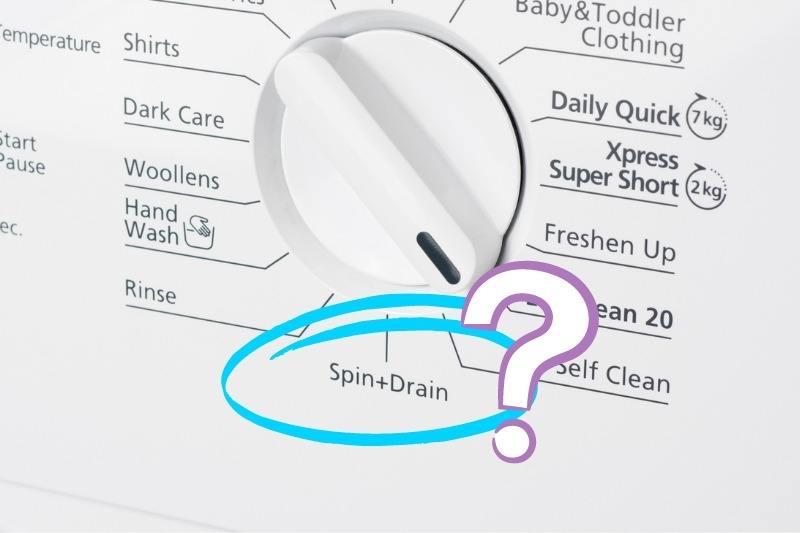
It would take ages and ages for water-logged laundry to dry in a tumble dryer, even if the items were exposed to high heat and agitation!
This would lead to longer drying cycles, which would cost more in electricity. Hence the importance of a spin dry feature.
Traditionally, spin speeds are measured in ‘rpm’ and this stands for ‘revolutions per minute’. So, if your appliance states that it has 1200 rpm, this means that the drum will rotate 1200 times within a minute.
In addition to the above, you can usually pick what type of spin speed you’d like your appliance to run at too.
This is particularly helpful when you need to speed up the spins for harder wearing materials, or when you need to slow the spins down for delicate materials.
Cottons, for example, can withstand an rpm of around 1400, whereas delicate items made of silk can tolerate an rpm of less than 400, and in some cases, it would be best not to spin such materials!
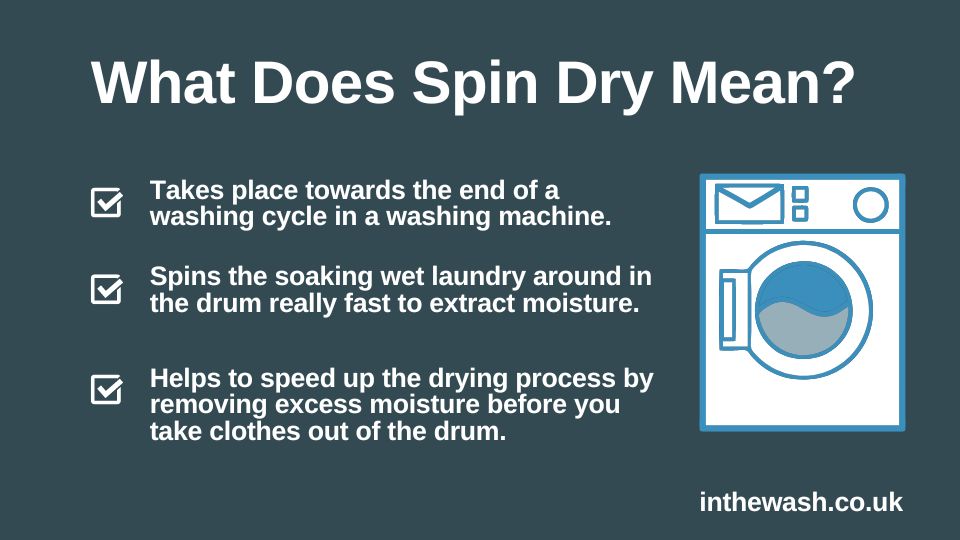
When do you use the spin dry feature?
You will likely use the spin dry feature in the following circumstances:
- You use the spin dry feature to remove unwanted fluid from clothes that have been washed and are wet.
- Spin dries typically take place at the end of a regular washing cycle.
- Additional spin dry cycles can also be run to remove further moisture from clothes – say if one spin didn’t get rid of enough water, a second spin could be run!
- You could also spin dry your wet laundry if it got caught out on the line in the rain – the spin would remove the rain water for you and would make the clothes easier to dry.
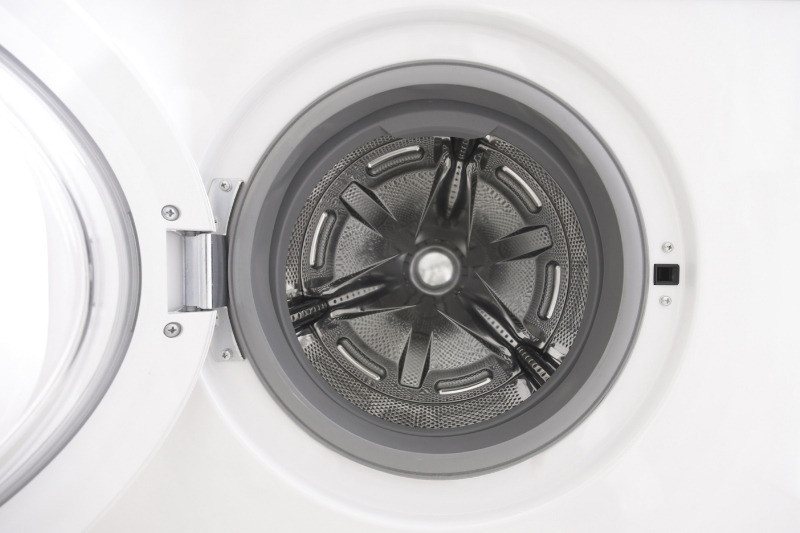
What Does Tumble Dry Mean?
“Tumble dry” usually refers to putting your laundry inside a tumble dryer to dry it. This is significantly different to a spin dry, because a tumble dryer’s aim is to fully dry your laundry, rather than to just extract some of the fluid from it.
When you stick your clothes in a dryer to tumble dry them, your items will be exposed to heat and the drum inside the machine will move around to agitate the laundry.
The constant hot temperature and movement dries the clothes over a set period of time.
Items usually come out of the machine feeling warm, and if you’ve chosen a ‘Ready to wear’ cycle, you can pop the item of clothing on straightaway. Obviously check that it’s completely dry first – just in case.
Using a tumble dryer to dry your laundry is incredibly convenient, because it can save you a lot of time, dryers are simple to use, they’re weatherproof, and you can pick a machine that suits your home.
Drying cycle times do vary across different makes and models of tumble dryer, but drying times are not overly long.
You don’t have to fill the machine up to its maximum capacity either to get the most out of it. Plus, if you spin dry your clothes beforehand, your items won’t be soaking wet, and this reduction in moisture will also aid the drying process.
In addition to this, you can select appropriate drying programs to dry your laundry on when tumble drying items. This not only means that the clothes are dried in the right environment, but they won’t succumb to much damage if you dry them properly.
You can, for example, choose a cotton drying program, a heat specific cycle, a delicate program or a quick drying cycle to dry your laundry on.
In most cases, dryers usually do a good job of drying clothes, however, there are certain times when they can stir up trouble for your laundry!
These issues usually occur when you stick clothes inside the machine that are not tumble dry friendly, or when you don’t check a clothing tag prior to drying an item, and you use a heat that is too hot!
The end result of such a mishap is either damaged clothing or items have shrunk in the dryer. Either way it’s not ideal for you, and although it’s not impossible to unshrink clothes or repair them, it can take time to do this.
Of course, you can avoid such problems by scanning the label on your clothes first! And you should always listen to what the tag says – especially if it tells you not to tumble dry an item.
When to tumble dry laundry?
Tumble dryers are extremely convenient to use, and that is why they’re very popular with people. But when do you actually need to use a tumble drying cycle? Here are some examples of when you could consider using the tumble drying method:
- When it’s wet outside and you can’t dry the laundry.
- When it’s too cold to dry clothes outside.
- To speed up the drying process.
- To dry clothes in a special way – at a specific temperature, for example.
- To ensure that clothes are dried evenly – line dried items can feel damp in patches.
- When you have lots of laundry that needs drying, and leaving wet laundry in a pile to one side just isn’t an option.

The Differences Between Tumble and Spin Drying Explained
A tumble dry and a spin dry are two very different things. And while they both have ‘dry’ in their name, they couldn’t be more different.
Let’s recap on the main differences between tumble dry and spin dry:
- Washing machines spin dry; tumble dryers tumble dry – “Spin dry” is a feature that typically appears on washing machines, whereas tumble drying is associated with tumble dryers, a completely different appliance.
- Tumble drying fully dries clothes – Clothes usually come out of a washing machine after a spin dry and they still feel damp, although they won’t feel soaking wet. After clothes have been tumble dried, as long as the correct setting and cycle duration was chosen, the laundry should be dry.
- Spin drying is usually part of a bigger laundry cycle – A spin dry usually happens at the end of the washing cycle in the washing machine, so it’s part of a larger washing process. In contrast, a tumble-drying session is an entire session by itself, it isn’t part of a larger cycle that is being carried out.
- Spin drying can crease laundry – Spinning laundry at such high speeds can lead to items becoming very creased. On the flip side, tumble drying clothes doesn’t always make them creased. In fact, a lot of tumble dryers have ‘Ready to wear’ settings that you can pick to dry clothes on, so clothes can be worn immediately.
- Tumble drying can be more versatile – Tumble dryers come with various drying cycles that you can choose to use, so you can select the right program to dry your laundry on.
These cycles are almost always labelled effectively too, which means that there’s less risk of you ruining or damaging your garments by picking the wrong cycle.
Spin dry cycles in contrast, aren’t always labelled as effectively, so you might turn the dial to the wrong rpm for the material you’re spinning. - Spin cycles are usually quicker – Spin dries are almost always faster to complete than tumble drying cycles. And this is no surprise considering you’re actually drying clothes in one instance, and just spinning water out of them in another!
- Tumble drying uses heat – When clothes are spun around in a washing machine, they don’t get exposed to heat. In complete contrast, a tumble dryer uses heat, even if it’s just a very low temperature, to dry laundry.

The Similarities Between Tumble Dry and Spin Dry
Tumble dry and a spin dry are completely different, but you will notice that there are some similarities between the two.
Just keep in mind that although there may be some common ground between them, they are not the same thing.
Here are some things they have in common:
- Choice of settings – You can choose a ‘spin speed’ before you start a spinning session. This gives you the option of picking an appropriate rpm for the material you need spinning. Similarly, you can choose an appropriate tumble drying setting to dry certain materials on.
- Involves agitating laundry in a drum – Both a tumble dry and a spin dry exercise will agitate laundry by turning them around inside a large drum.
- Can damage or shrink laundry – If not used with care, both can damage materials and, in some cases, shrink clothes.
Does Spin Drying Damage Clothes?
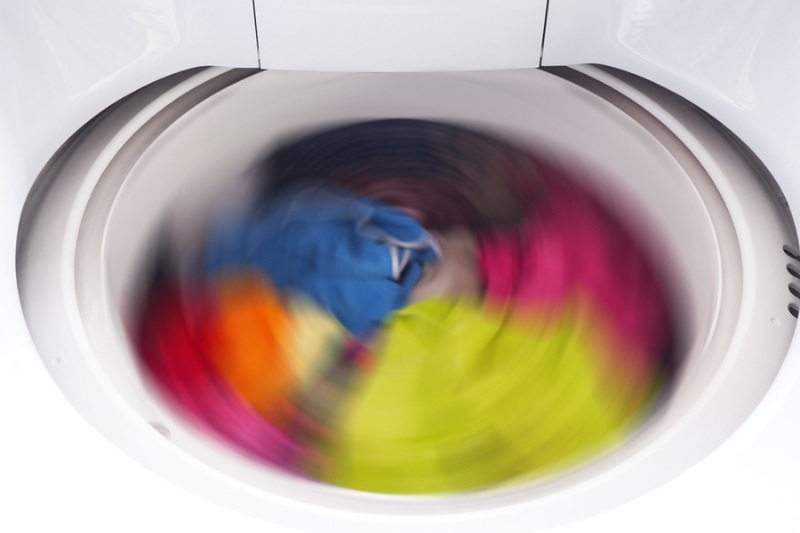
Yes and no. Delicate materials, like silks and laces, might get ruined when the spin cycle takes place.
However, many other materials, like cottons, will be able to withstand the speed of the spin, and will leave the washing machine undamaged.
If you use the spin dry feature with care your clothes should be fine. Just remember to adjust the rpm as and when you need to!
Can You Tumble Dry Everything?
Absolutely not. You must always check the clothing tag on the item you intend on drying before throwing it into a tumble dryer.
There are usually lots of symbols on clothes tags and they’re there for a reason, so stick to them!
If something is fine to tumble dry, you will see the following symbol: a square with a circle in the centre. This means that it is okay to tumble dry the garment on any heating setting.
If you see the exact same symbol but with a cross through it, you should not tumble dry the garment.
Refer to our full list of UK laundry symbols and their meaning if you’re not sure.

Bethan has a passion for exploring, reading, cooking and gardening! When she’s not creating culinary delights for her family, she’s concocting potions to keep her house clean!
